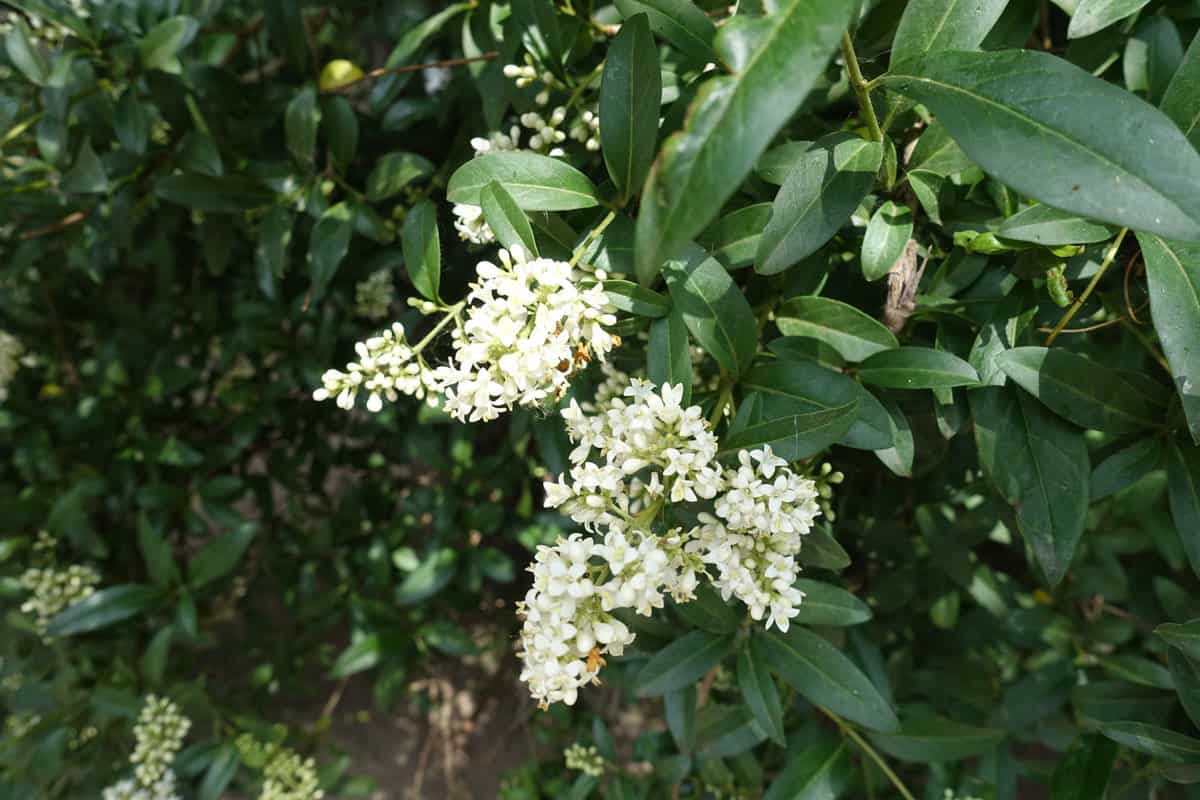Privet is a popular landscaping shrub that can grow up to 50 feet high and is often used for hedges.
Yet, lurking beneath the appealing foliage lies a question that haunts many a gardener and homeowner: does the privet house invasive roots that may spell doom for nearby structures or the neighboring flora?
Yes, privet harbors a less celebrated trait—it is invasive.
While it may not disrupt foundations or underground pipes, privet can rapidly establish itself, crowding out native species and altering the landscape.

Approach this green companion with a discerning eye, for with it comes the responsibility to manage its invasive nature within your garden's realm.
What is Privet?
Privet is a shrub that was originally imported from Asia in the mid-1800s for hedges and other landscaping uses.
Privets are known for their dense foliage and ability to grow quickly, making them a popular choice for landscaping.
Types of Privet
There are four different species of privet that can be found across Pennsylvania and other Mid-Atlantic states. These species are:
- Border (L. obtusifolium)
- Common (L. vulgare)
- Japanese (L. japonicum)
- Chinese (L. sinense)
Exploring Privet's Root Structure
Root Suckers and Propagation
This unassuming shrub can reproduce asexually through what's known as root suckers.
These tiny root fragments can potentially sprout into new privet plants. It's a clever mechanism that empowers privet to expand its reach within your garden.
The Invasive Roots and Your Garden
While privet roots might not be infamous for causing structural damage like some other invasive plants, they are still invasive and possess the power to drastically alter your garden's landscape.
Managing Privet Roots
Fortunately, there are several methods you can use to prevent private roots from causing damage and to control them if they are already present.
Prevention Methods
The best way to manage private roots is to prevent them from causing problems in the first place. Here are some prevention methods you can use:
Planting Distance
When introducing new privet shrubs to your garden, the rule of thumb is to provide ample breathing room.
By spacing the shrubs at least 10 feet apart from each other and any nearby structures, you allow them to thrive without encroaching upon each other's territory.
Adequate spacing fosters healthy growth and minimizes the chances of privet becoming overly dense and challenging to manage.
Root Barriers
Installing root barriers serves as a strategic defense against privet's invasive nature. These barriers act as a formidable obstacle, preventing privet roots from infiltrating unwanted areas of your property.
Root barriers should be buried at least 18 inches deep into the ground and extend above the soil's surface to be effective.
This creates a formidable barrier that discourages root penetration, safeguarding your garden from potential overgrowth.
Regular Maintenance
Keeping your privet shrubs well-maintained is a proactive strategy to prevent unruly root growth.
Regular pruning and trimming contribute to the aesthetic appeal of your garden and play a crucial role in managing root development.
By consistently tending to your privet shrubs, you can ensure they remain within manageable bounds, preventing them from becoming overly large and unwieldy.
This hands-on approach to maintenance is key to preserving the integrity of your garden's landscape while harnessing the beauty of privet.
Control Measures
If you already have privet roots causing problems on your property, there are several control measures you can take:
Digging
Digging up privet roots manually can be a highly effective method to gain control over their growth. By physically removing the roots, you directly eliminate the source of the problem.
However, it's essential to note that this method has challenges. It can be time-consuming and labor-intensive, mainly if you're dealing with a well-established privet shrub with an extensive root system.
Additionally, you'll need to ensure that you've removed all root fragments to prevent potential regrowth.
Stump Grinding
Stump grinding takes root control to the next level by eliminating the entire root system of a privet shrub. This method is particularly effective when you want to ensure no remnants of the shrub's roots remain.
It involves using specialized equipment to grind down the stump and its associated roots below ground level.
While stump grinding is highly effective, it can be associated with a higher cost, primarily due to the need for specialized machinery and skilled labor.
It's a choice often made when complete root eradication is the goal and when budget considerations allow for this comprehensive approach.
Chemical Treatments
Chemical treatments, such as glyphosate-based herbicides, offer a chemical solution to controlling privet roots.
These chemicals are designed to kill the roots effectively. However, they come with a critical caveat – the potential harm they can cause to the surrounding environment.
Chemical treatments should be cautiously used due to their capacity to harm other plants and animals in the area.
They can have long-lasting consequences on the ecosystem, making it crucial to consider alternative methods first and resort to chemical treatments as a last resort.
When using these chemicals, always follow manufacturer instructions diligently and take measures to minimize collateral environmental damage.
Click here to learn more on Amazon.
Final Thoughts
Privet can be a beautiful addition to your landscaping, but it's essential to be aware of its invasive tendencies.
Remember, being a responsible gardener and protecting our natural ecosystems from invasive species is essential.
As you make informed choices and take action to prevent the spread of invasive plants like privet, you can help preserve the biodiversity of our environment.
If you like this article, read more:
Does Japanese Box Have Invasive Roots?

